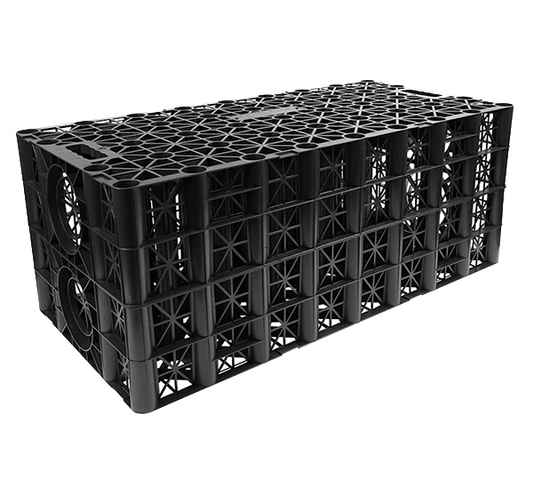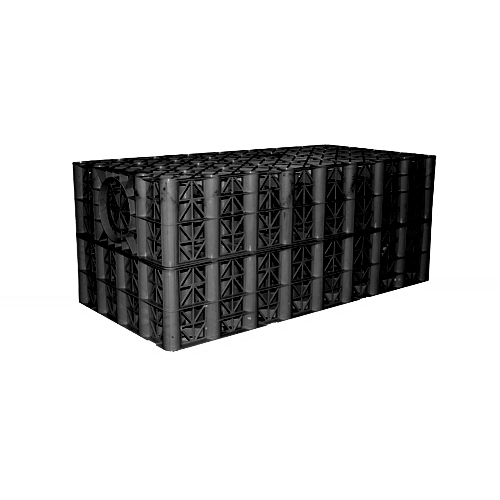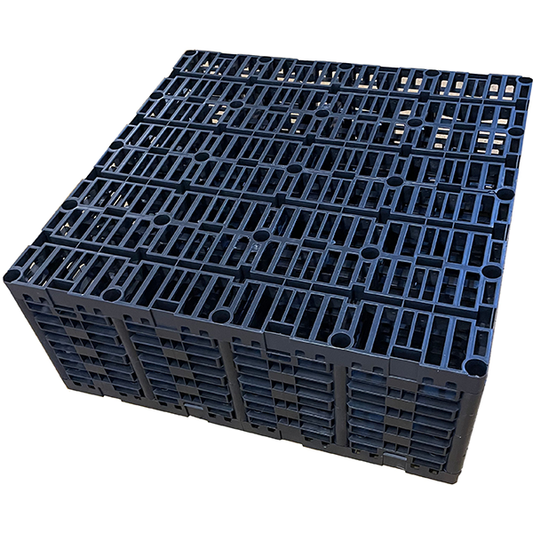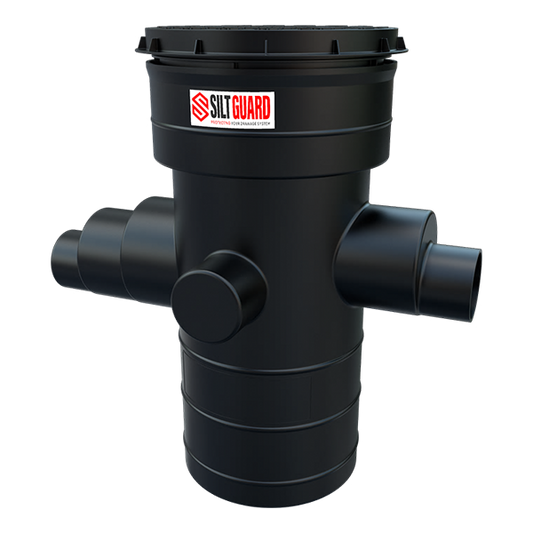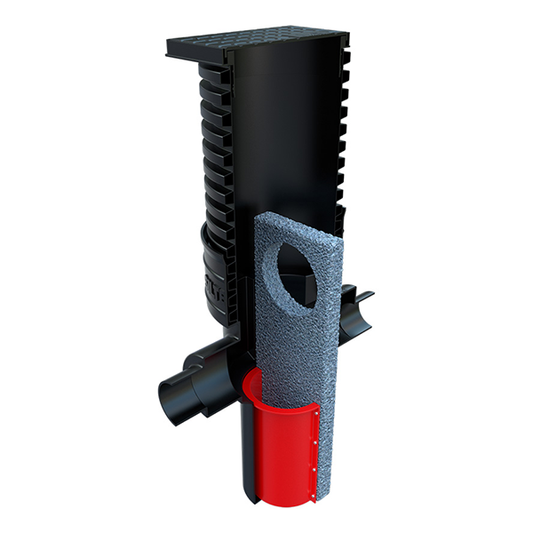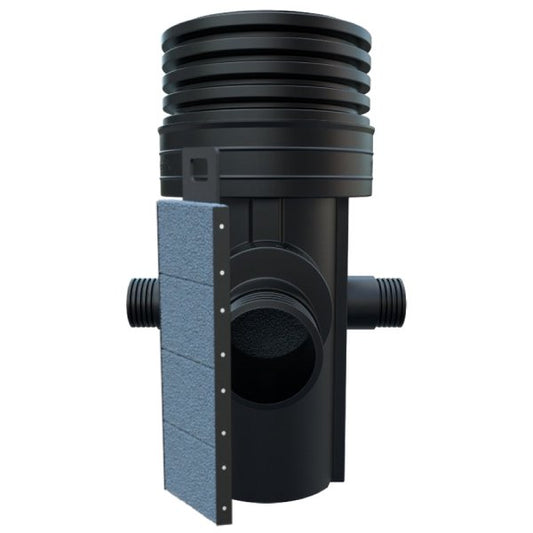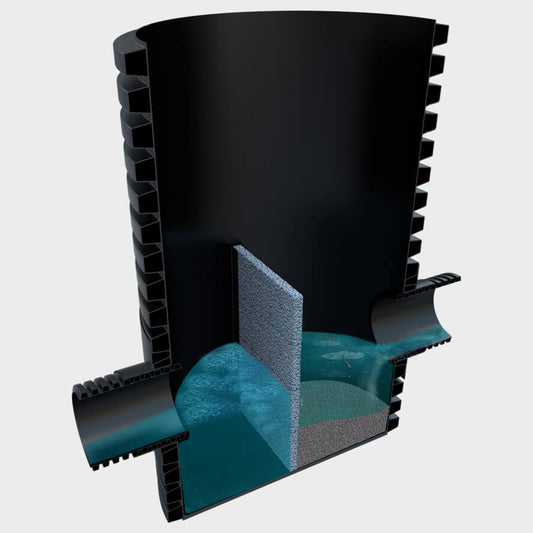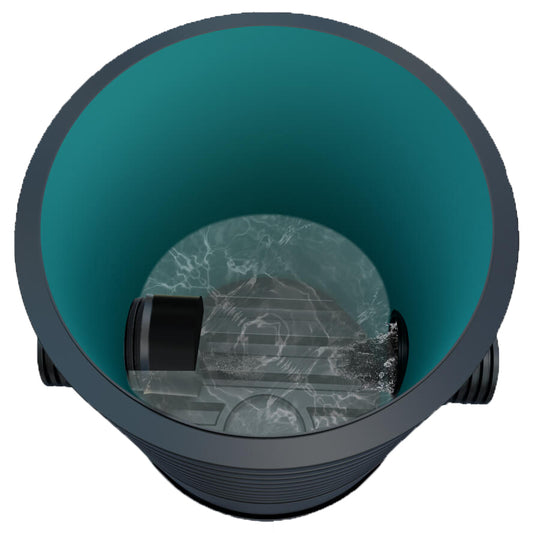One way to manage the flow of stormwater runoff and reduce the risk of flooding is through the use of soakaway crates. Here’s a useful guide to what they are and how to install them:
Contents
- What is a soakaway?
- Why are soakways important?
- How do soakaway crates work?
- What are soakaway regulations?
- How to calculate the size of a soakaway?
- What materials are needed to build a soakaway?
- How long do soakaways last?
- Can I discharge rainwater into a sewer?
- How can we help?
- Other products to manage rainfall
What is a soakaway?
There are two types of soakaways. A natural soakaway, which is essentially a hole dug in the ground and filled with pebbles, or one that uses specialist crates or tanks. In the case of soakaway crates, also known as stormwater crates, this creates an area where rainwater can be stored until it seeps in the ground. It effectively reduces infiltration time, helping prevent the risk of flooding.
Soakaways, also known as Sustainable Drainage Systems (SuDS), are specifically designed to cope with large amounts of surface and roof rainwater, without them homes and neighbourhoods could be at a risk of flash floods when there is heavy rainfall. The rainfall from gutters, patios and driveways should be directed towards a soakaway within the boundary of the property.
Why are soakways important?
The importance of soakaway systems has increased rapidly in recent years. This has been down to a number of factors, including the increase in extreme weather and the expansion of our cities and towns leading to the increase in hard impermeable concrete surfaces. Instead of the rainfall naturally soaking into the ground, it now needs to be directed by a network of pipes and culverts that carry it as fast as possible to the nearest river or stream. Read more here.
How do soakaway crates work?
Manufactured from durable plastic, which clip together easily to form a box structure, soakaway crates are installed below ground and are used to control the flow of surface water when there is extreme rainfall.
Soakaway crates have an inlet that allows up to 97% of their occupied space to fill with water. They prevent flooding by storing the build up of water during storms and then only allowing this water to gradually disperse back into the ground, at a rate the ground can handle rather than all at once.
They are popular in both commercial and residential projects because they provide a simple, cost-effective and easy to install solution to control stormwater.
What are soakaway regulations?
Here’s a summary of the regulations for the installation of soakaway crates:
- Should be located at least 5 metres from the wall of any building
- At least 2.5 metres from the boundary
- The water table should not reach the bottom of the pit at any time of the year
- Should not be close to another soakaway or in a location where the water may become contaminated
- The soil should be percolation tested (see how to here – put link to blog )
- The size/volume of the soakaway should be based on a drainage calculation (this is easy once a drainage percolation test is completed and you know the surface area where the water is coming from)
How to calculate the size of a soakaway?
While we recommend your groundworker conducts a soil percolation test and creates a set of calculations, there is an alternative method that will give you a rough idea of the soakaway size you’ll need:
If your soil type is not too heavy/clay, you can assume that one crate (1000mm L x 500mm W x 400mm H) will be sufficient for ten sq metres of driveway or roof covering etc.
Five crates are equal to 1 cubic metre, and one cubic metre is suitable for 50 square metres of surface area.
So get your tape measure out and calculate the total surface area in square metres. More information on calculating the size required can be found here.
|
Roof pitch |
Factor |
|
20.0° |
1.182 |
|
22.5° |
1.207 |
| 25.0° |
1.233 |
|
27.5° |
1.260 |
|
30.0° |
1.288 |
|
32.5° |
1.319 |
| 35.0° |
1.350 |
| 37.5° |
1.384 |
|
40.0° |
1.419 |
| 42.5° |
1.459 |
|
45.0° |
1.500 |
| 47.5° |
1.547 |
What materials are needed to build a soakaway?
- Soakaway crates
- Membrane
- Underground pipe
- Gravel
- Gully, drain head or other devices to stop leaves from entering the pipe (£variable)
How long do soakaways last?
They should last the life of the house, at least 100 years but only if installed correctly and filters are used to prevent leaves and other material clogging the soakaway. Maintenance and regular checks are key to extend their lifespan.
Can I discharge rainwater into a sewer?
You may be able to discharge the water into a sewer if no other alternative exists and you have permission from the water company, who may charge a yearly fee.
There are occasions when it’s impossible to create a soakaway that works sufficiently:
- Your garden soil is made of thick clay, and the water doesn’t drain away
- The water table is high, and you can’t build a soakaway that doesn’t fill with groundwater
- You cannot build one within the constraints of the regulations (within 5 metres of a building or 2.5 metres from a boundary etc.)
If a soakaway is impossible to achieve, you can discharge the water into a local watercourse if you live next to one. If that isn’t possible, you can discharge the rainwater into a sewer, although you will need to notify the water company and they will charge you a yearly fee for this.
How can we help?
At Cotterill Drainage, we supply a wide range of solutions to support SuDS schemes. These include storm crates, storm attenuation tanks, storm attenuation lagoons, silt filters and flow controls.
Our storm attenuation systems are used to manage excess rainfall on new developments by collecting, storing and releasing stormwater in a controlled manner to local watercourses. We can also install these systems for you too, providing you with a complete design, supply and install service.
Other products to manage rainfall
We also supply other products that can help you manage the flow of rainwater including slot drains, channel drainage, gullies, land drainage pipe and sewer pipe.
Our team of specialists can provide you with expert advice. Call us today on 0121 351 3230.
Alternatively, fill out our enquiry form:






